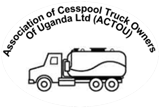
By the year 2050, it is projected that more than two-thirds of the global population will reside in urban areas. However, the growth of water and sanitation services often lags behind in rapidly urbanising cities, leading to deteriorating health conditions. Uganda is no exception to this trend. The urban population in the country is expected to nearly double between 2018 and 2050, putting immense pressure on the sanitation infrastructure. Currently, only 2% of urban Ugandan households are connected to a sewer line, with the majority relying on on-site sanitation facilities like septic or pit toilets. However, constraints such as limited space and high construction costs hinder households and institutions from building new toilets when existing ones fill up.
Thank you for reading this post, don't forget to subscribe!The need for safe and affordable pit emptying services is on the rise in urban Uganda, playing a crucial role in achieving universal access to safely managed sanitation. While the government’s focus lies on building treatment infrastructure and promoting the construction of emptiable toilets, the responsibility of pit emptying is largely placed on the private sector.
In urban Uganda, pit emptying services are predominantly provided through three types of private-sector services: mechanized emptying through cesspool trucks, semi-mechanized emptying through ‘gulpers,’ and manual emptying. While mechanized and semi-mechanized methods ensure safe and hygienic practices, manual emptying is considered unsafe and illegal in Uganda due to direct exposure to fecal sludge.
Despite the availability of safer options, many urban households and institutions still resort to manual emptying due to limited access to Cesspool Truck Entrepreneurs (CTEs) and Gulper Entrepreneurs (GPEs), who are mainly concentrated in Kampala and perceived as expensive. While Kampala boasts an active market for safe Fecal Sludge Management (FSM) services, other urban areas in Uganda lack a vibrant market in this regard, with few CTEs and GPEs operating informally on a small scale.
The Uganda Sanitation for Health Activity (USHA), funded by the United States Agency for International Development (USAID), aims to enhance access to safely managed FSM services. By understanding the barriers faced by FSM entrepreneurs (FSMEs) and identifying business model enhancements, the project seeks to improve the sustainability of FSMEs in select urban areas within three USHA districts—Jinja, Kyotera, and Masaka.
An initial field research conducted by the USHA-FSM project team revealed that most FSMEs in these districts operate informally, run single-truck businesses, and lack a structured understanding of their revenues and costs. This lack of business organization contributes to challenges such as low utilization, high transport costs, and customer defaults, resulting in net losses for the FSMEs.
To address these challenges and enhance the financial health of FSMEs and USHA are implementing interventions to improve the business models of FSMEs and pilot these interventions with selected partners. The goal is to overcome the barriers hindering the scalability and sustainability of FSM services in urban Uganda.
The project team looks forward to sharing insights gained from these pilots in forthcoming articles.




